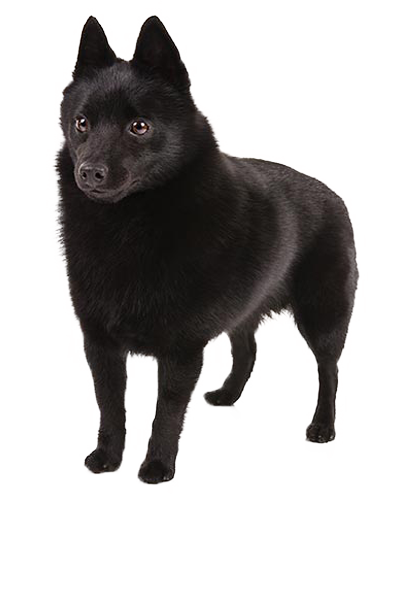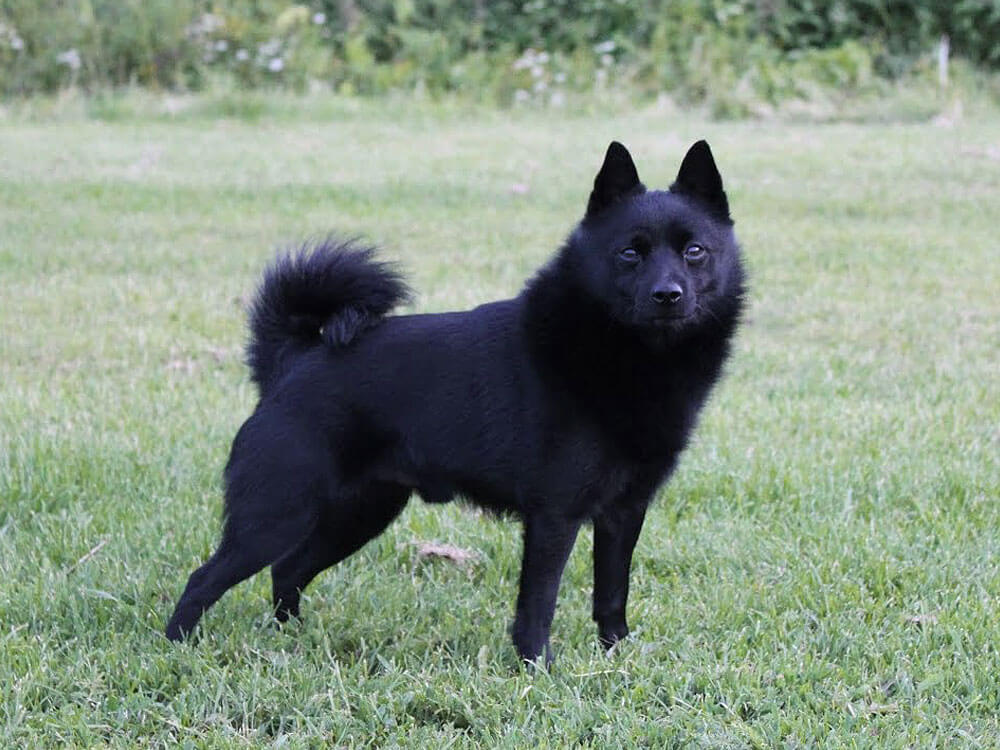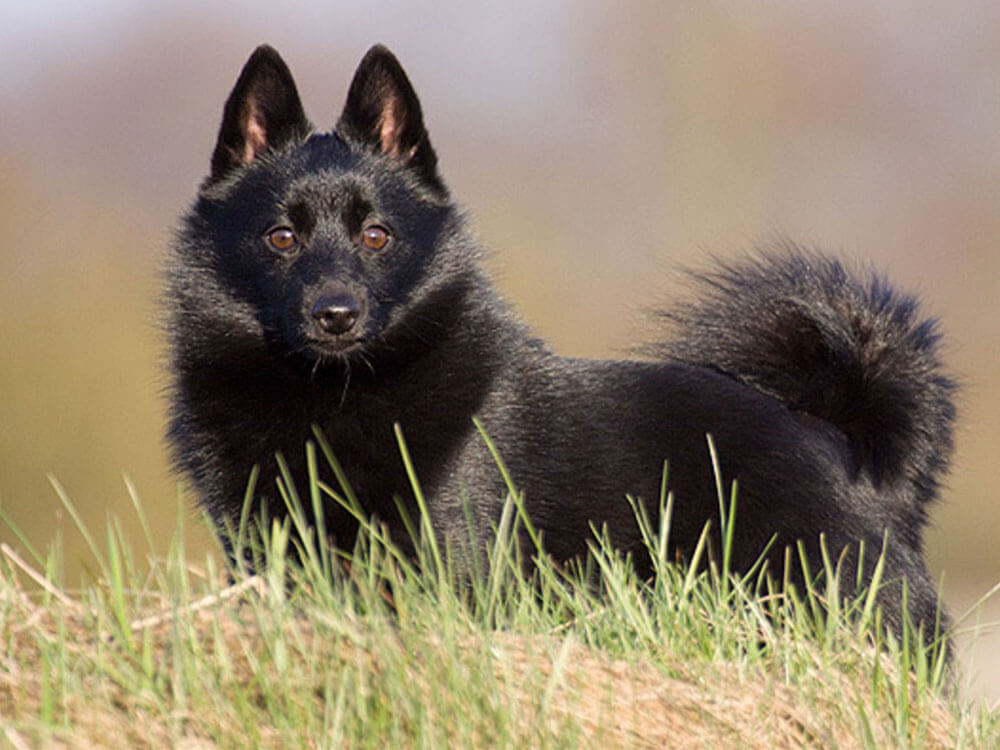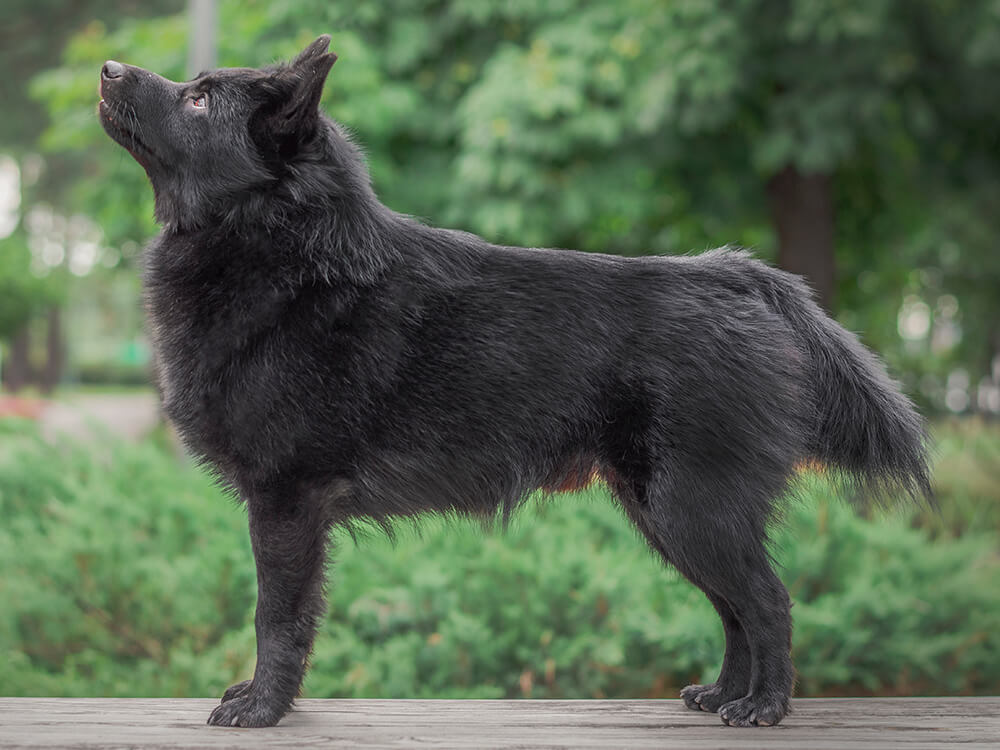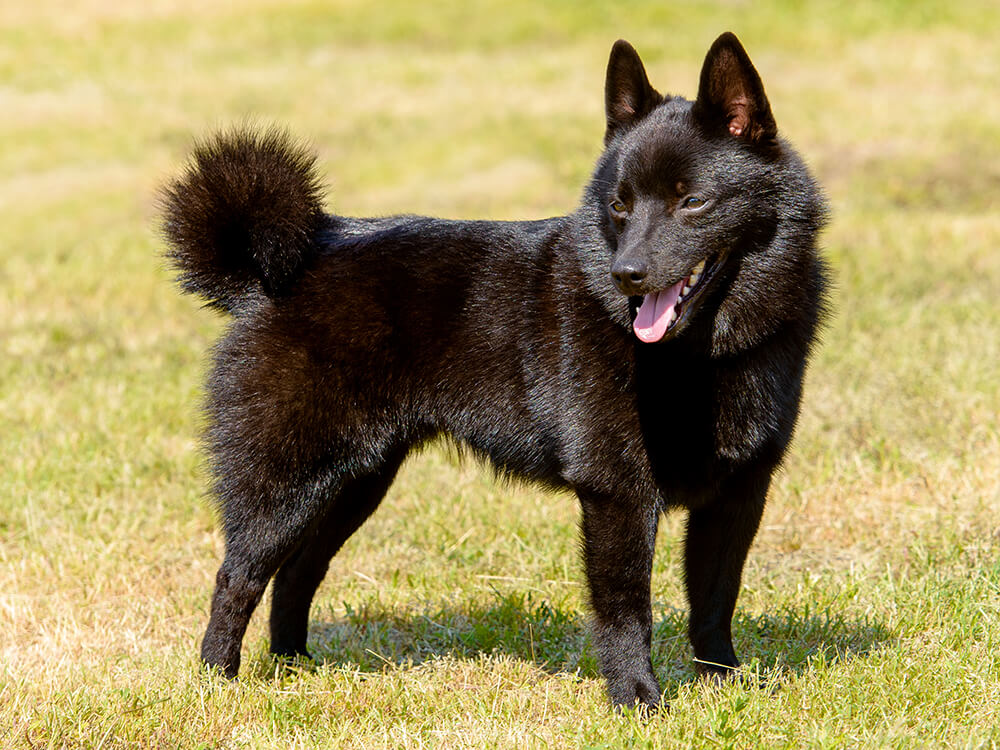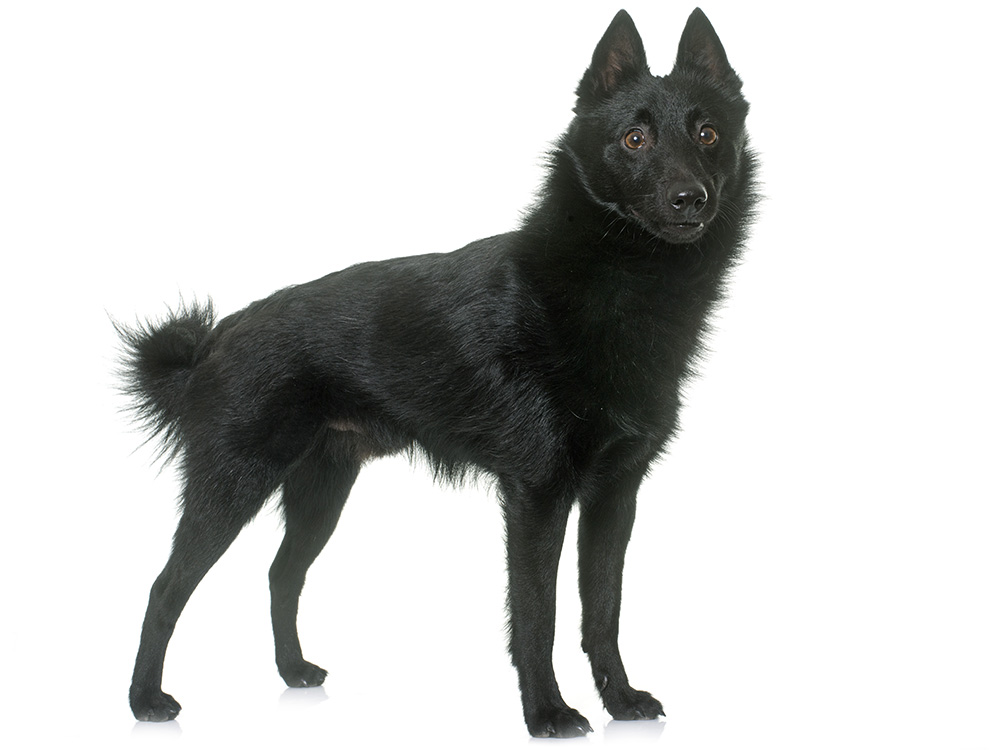
Schipperke Breed Pictures
Vital Breed Stats
| Height: | 21 - 33 cm M | 21 - 33 cm F |
| Weight: | 6 - 8 kg M | 6 - 8 kg F |
| Breed Group: | Terrier Dog Group |
| Life Expectancy: | 13 - 15 years |
| KC Registered: | No |
Breed Characteristics
| Size: |  |
| Grooming: |  |
| Exercise Level: |  |
| Trainability: |  |
| Barking Level: |  |
| Good with Children: |  |
| Good with other pets: |  |
| Affectionate: |  |
| Protective: |  |
| Cost to Keep: |  |
Give a thumbs up if you love the Schipperke

0
More About the Breed
History
The Schipperke was bred in Belgium and the Netherlands. It is believed to have descended from the forty-pound black sheepdog Leauvenaar, which is the same foundation breed for the Belgian shepherd. But unlike the Belgian shepherd, the Schipperke was bred to be a small guard dog.
Originally, it was called Spitske, but was given the new name Schipperke (which translates to little captain or little shepherd) when a breed club was established in 1888. Back then, Schipperkes were often seen guarding the boats between Brussels and Antwerp, hence the name. However, the little watchdog was already a celebrated success when Queen Marie Henriette favoured the breed after seeing one in a show in Brussels in 1885. Its popularity reached the United States in 1888 and a breed club was formed there in 1929. The breed is also recognised by the Kennel Club in the UK.
Though it is not widely popular today, the Schipperke is known to be a highly intelligent, loyal, and affectionate companion and family pet. Today, the Schipperke is considered a rare breed. Anyone who wants to buy a Schipperke puppy will have to register their interest and agree to be put on a waitlist.
Appearance
The Schipperke is a lithe, small utility dog with a face resembling a fox. This breed has a cobby body, which means short and square, standing 25–33 centimetres and weighing 11–18 pounds. The Schipperke has a broad, flat skull and a moderately long and pointed muzzle. The ears are triangular and sit atop the head.
In the US and Canada, most Schipperkes, if not all, are without tails since these are traditionally docked at birth. However, in the UK, tail docking has been banned except for certified working dog breeds.
The Schipperke has a thick double coat that is rough, moderately short, and forms a thick ruff around the neck. In addition, it sports thick culottes or long and thick hair at the back of the dog's thighs.
Grooming
Since Schipperke was bred to be a river dog, its coat is dense and water-resistant. In other words, the breed is low-maintenance with respect to dog grooming. It will only require weekly brushing, except when it starts shedding its undercoat.
During shedding season, which is two or three times a year, grooming can be labour-intensive and time-consuming. With that said, most owners will hire a professional groomer. However, the rest of the dog grooming routine is manageable (e.g., nail trimming, dental care, and ear cleaning).
Temperament
Intelligence
Since the Schipperke is a small dog, it tends to compensate and act dominant when left unchecked or when its place in the pack is not established. With that said, Schipperke can be difficult to house-train. It can also be a horrible and persistent barker. These tendencies can be curbed when given proper training and early socialisation.
The Schipperke is great with children in the house because it is naturally gentle, albeit a little enthusiastic. However, always bear in mind that interaction between the two should be supervised regardless of the dog’s disposition. The Schipperke is also skittish around children it doesn’t know, so care should be taken when other kids come over to play. It gets on well with other dogs, especially when socialised. But since this is a protective and territorial breed, it pays to be careful, including around smaller animals.
Nutrition
- Senior and less active: up to 540 calories daily
- Typical adults: up to 610 calories daily
- Physically active/working dogs: up to 670 calories daily
Feeding
Health
- Legg-Calve-Perthes disease
- Autoimmune thyroiditis
- Epilepsy
- Patellar luxation
- Progressive retinal atrophy
- Hypothyroidism
- Tracheal collapse
- Cryptorchidism
Exercise
Cost of Ownership
How much does a schipperke cost? Before moving on to answer that question, know that this dog breed is rare. So if you don’t have plans to wait months or a year(s) for a dog, it is best to choose another breed that is readily available. Now, since that has been settled, let’s answer 'how much does it cost to buy a schipperke puppy?'
A Schipperke's price ranges from £800 to £1,500 when you buy from a reputable breeder. A Schipperke from a superior breed line comes with a hefty price tag; breeders may charge between £1,600 and £3,000. A pet insurance for this breed will make you shell out £20 a month for a basic cover, whereas a lifetime insurance cover costs around £40 a month. Although pet insurance can significantly help with veterinary costs, you will still need to spend for veterinary care (vaccinations, boosters, etc.), which will cost around £800 per year.
When it comes to food, the cost will depend on what type of food you’ll feed a Schipperke, whether commercial dog food or home-made diet. Whichever is the case, feeding a Schipperke may set you back £20 to £30 a month. Overall, to keep and care for a Schipperke will cost you £50 to £80 a month.
Schipperke Breed Highlights
- The Schipperke is a lithe, small utility dog with a face resembling a fox.
- It is low-maintenance when it comes to grooming.
- The Schipperke thrives in a family environment and deeply bonds with its owners.
- Its barking tendencies make it a great watchdog.
- The Schipperke is a rare breed in the UK.
